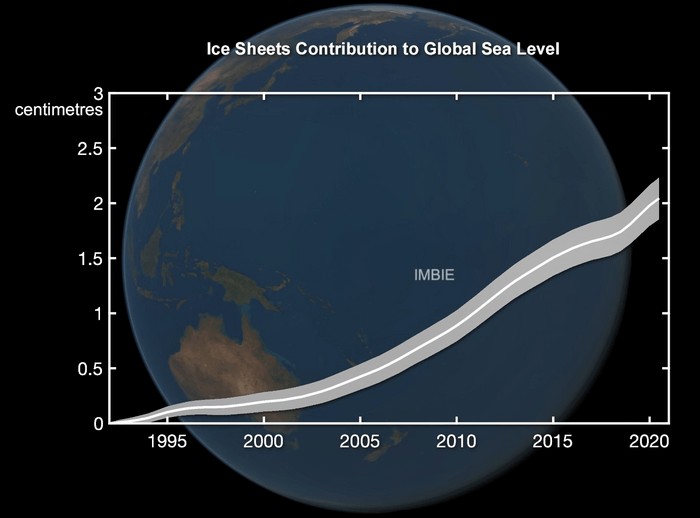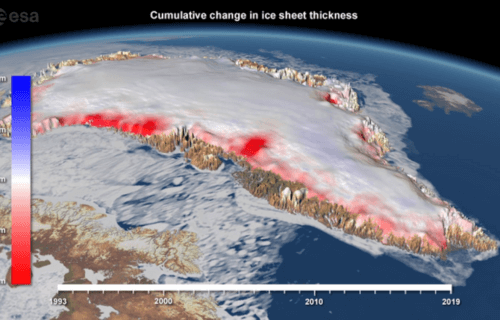NEWCASTLE-UPON-TYNE, United Kingdom — If you think it’s been unusually warm over the last few years, you haven’t been imaging it. The seven most severe years of polar ice sheet melting ever recorded have all taken place within the last decade, new research shows. Between 1992 and 2020, the ice sheets shed an astounding 7.6 billion tons — comparable to a 12-mile-high cube.
Scientists from the United Kingdom say rising sea levels resulting from these melt-offs are causing widespread flooding along coastlines worldwide. If this trend continues at its current pace, we could see sea levels rise by nearly a foot by the century’s end.
“Ice losses from Greenland and Antarctica have rapidly increased over the satellite record and are now a major contributor to sea level rise,” says Dr. Ines Otosaka, the lead author of the study from the University of Leeds, in a media release.
Currently, these losses account for a quarter of the global total — an increase of five-fold from 30 years ago.
“This drastic increase has serious implications for coastal communities globally, increasing their risk of exposure to flooding and erosion. It is crucial that we have accurate predictions of future ice sheet contributions to sea-level rise,” adds Dr. Otosaka. “With this information, we can inform these communities about the imminent changes, facilitating their planning for necessary mitigations.”

(Credit: IMBIE / CPOM at Northumbria University)
The most devastating year recorded was 2019, when a staggering 612 billion tons of ice were lost due to an unusually severe summer heatwave in the Arctic.
“Continuously monitoring the ice sheets is critical to predict their future behavior in a warming world and adapt for the associated risks that coastal communities around the world will face,” says Dr. Otosaka, further emphasizing the importance of ongoing monitoring of the ice sheets.
This study is the third assessment from the Ice Sheet Mass Balance Intercomparison Exercise (IMBIE), which utilizes data collected by NASA and the European Space Agency (ESA).
“We have now reached a point where we can continuously update our assessments of ice sheet loss, given the number of satellites monitoring them. This enables immediate utilization of our findings,” remarks co-author professor Andrew Shepherd, from Northumbria University.
Antarctica has experienced the majority of its melting on its peninsula that stretches towards South America, and in the west, where warmer waters are shrinking the ice margin.
“Accelerating ice sheet losses indicate we will see a significant rise in the rate of sea level increase in the coming decade. Whereas in past decades it has been about 3mm per year, soon we will see increases of 4mm, 5mm, even 6mm per year,” warns Shepard. “This represents a significant shift from what we have been accustomed to.”
The international team combined 50 satellite surveys of Antarctica and Greenland, conducted between 1992 and 2020, to determine the impact of climate change. They found that ice sheets have consistently lost ice each year, which has elevated sea levels by nearly an inch (21mm) during this period — nearly two-thirds of this rise can be attributed to melting in Greenland, with the remainder due to Antarctica.
“This marks another milestone in the IMBIE initiative and exemplifies how scientists can coordinate efforts to assess the evolution of ice sheets from space, providing unique and timely information on the scale and onset of changes,” adds Dr. Diego Fernandez, head of research and development at ESA. “The new annual assessments represent a leap forward in how IMBIE will help monitor these critical regions, where variations have reached a level where abrupt changes can no longer be dismissed.”
The study is published in the journal Earth System Science Data with results also publicly available on the British Antarctic Survey website.
South West News Service writer Mark Waghorn contributed to this report.

